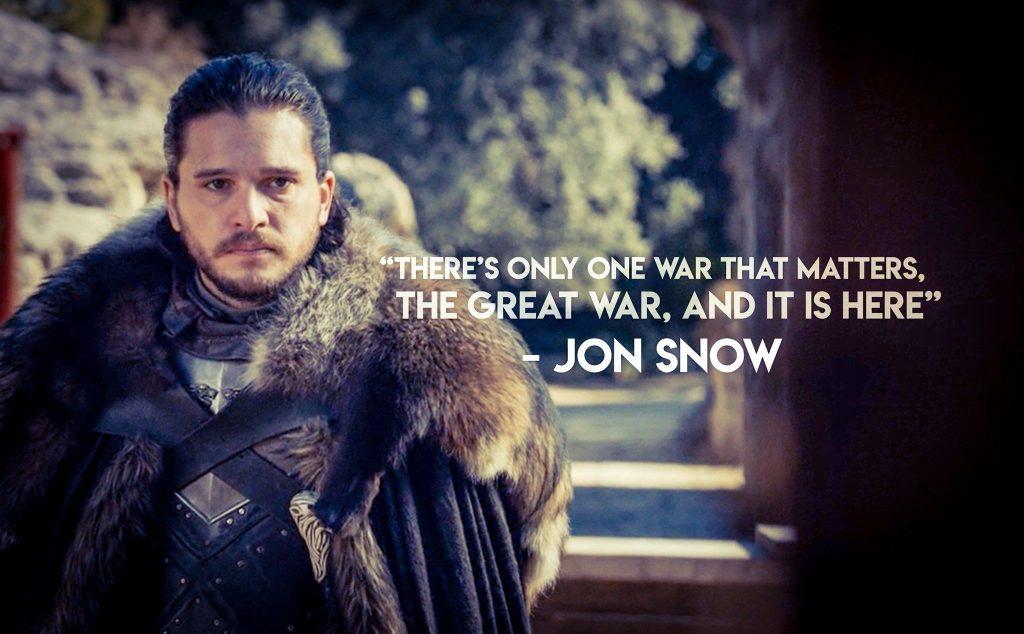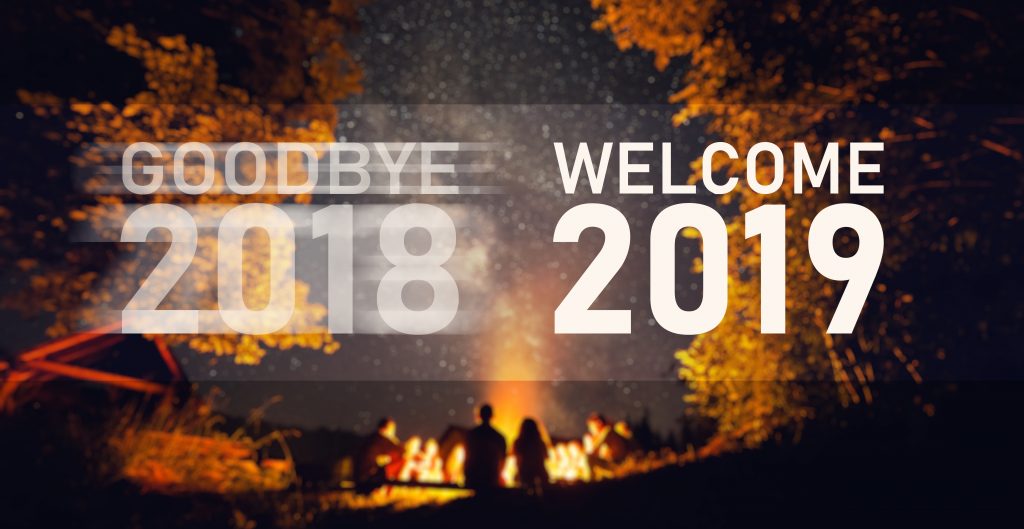
We are all young revolutionaries in the early years of the biggest revolution in human history. The digital/tech revolution (a.k.a. the Third Industrial Revolution) is barely 50 years old. It took us more than 200,000 years to reach a population of 1 billion and only 200 years more to reach approximately 8 billion. But having more humans won’t help us win this war. To “beat the bots” (#BTB), we will need to BE more human. This isn’t about living in harmony; it’s just about living.
~8 billion of us are still learning what Game of Thrones and Facebook already know:
The best way to successfully pursue happiness and take care of ourselves is to take care of each other.
We are still learning how to become one healthy global community.
The exponential change— VUCA (volatility, uncertainty, complexity, ambiguity) — that we are experiencing today brings a spectrum of possible futures and unintended challenges (e.g., algorithmic loopholes). We think it’s going to turn out OK, but none of us knows what’s really going on or what’s going to happen next. It’s like “a horse loose in a hospital”— we’ve never seen this before; everything is changing so fast.
But there are some things that aren’t changing fast enough.
We all seek our own happiness; we’re mostly taking care of ourselves. We have the same survival instincts, selfishness and self-preservation blindspots (biases). We are prone to be focused on protecting our individual throne or on smaller tribal conflicts and drama. “It seems like everyone everywhere is super mad about everything.” In our revolution, there are many isolated individuals and communities and too much unnecessary suffering.
Too many people in the world come to these challenges of disruption, conflict and differences with the wrong mindset and a limited, outdated set of tools:
- We approach these challenges with arrogance, impotence and counterproductive habits
- Our brains go “reactive” during the real-life stress, emotional scarcity and sideways pressure of pursuing our goals during times of change
- We resort to unhealthy social sorting, polarization, hostile sports fan identity politics, negative partisanship, etc.
THIS ISN’T ABOUT LIVING IN HARMONY
We’re so ineffective when we’re working on VUCA alone and when we’re not fully awake— even when our intentions are good. Our traditions and fears are stronger and more reliable than our declarations and desires to change. Without a “next level” of proficiency in building healthy communities, expanding constructive cultures, finding common ground and inviting a sense of belonging, there will be continued polarization and isolation.
IT’S JUST ABOUT LIVING
If all we have is isolation, silos, passive defensive and aggressive defensive norms, then we can forget about adapting successfully, we can forget about innovating effectively, and we can forget about getting to the complex problem-solving more quickly. We can forget about winning this war.
THE FOCUS & MINDSET OF THE PROTAGONIST/LEADER
In a healthy community, the role of the leader is to name the focus, priorities and purpose—the debate. Whether you use Facebook, read stories about Mark Zuckerberg, or have seen the global HBO sensation “Game of Thrones” by George R.R. Martin, the protagonist in each of these narratives speaks of a similar storyline.
FACEBOOK AS A PROTAGONIST
Mr. Zuckerberg has named the similar debate: shifting away from the old, broad mission of “making the world more open and connected” toward the next level (2017) Facebook mission statement: “Give people the power to build community and bring the world closer together. Progress now requires humanity coming together not just as cities or nations, but also as a global community.”

Despite our differences, Facebook’s new mission today is to help people all over the world find common ground and bring the world closer together— a new manifesto, presumably with new performance goals that will require increased levels of teamwork, collaboration, agility and innovation.
GAME OF THRONES AS A PROTAGONIST

In the Game of Thrones series, rulers of various thrones struggle mightily to bring the world closer together as one community, to join forces, to fight together, to focus on a common goal and a common enemy. The final season 8 airs April 14, 2019. In the last episode of season 7, the protagonist Jon Snow and many of the rulers of other thrones put aside their differences to build an alliance. All of these are very different communities and some are life-long, brutal enemies— and they are now risking everything to come together.
“There is only one war that matters — the Great War. And it is here. There is only one enemy worthy of our attention.”
They are more aware that the time has come to stop fighting each other and instead join forces to become one united community, with one goal, standing side by side, fighting one new, unexpected enemy (it’s in the box). In this scene, Jon Snow intends to reveal what they are up against. Jon Snow names the debate. He says:
“This isn’t about living in harmony, it’s just about living. The same thing is coming for all of us…a general you can’t negotiate with…an army that doesn’t leave corpses behind on the battlefield. A million people live in this city, they are about to become a million more soldiers in the army of the dead.”
NEXT-LEVEL SHIFTS HAPPEN IN COMMUNITY
Every expansive shift from our “current level” to our “next level” happens more predictably, more quickly and more deeply in community. In an earlier scene of season 7 in the caves of Dragonstone, Jon Snow sees drawings on the walls from the Children of the Forest depicting White Walkers. He realizes that the Children and the First Men fought together against a common enemy, and now he shares that in order to win, they should too.
“They fought together, against their common enemy. Despite their differences, despite their suspicions— together. And we need to do the same if we’re going to survive, because the enemy is real. It’s always been real.”

Rising to the next level happens during the ongoing, mutual process of raising one another up, shifting to higher levels of awareness and higher standards of purpose, relationship and performance— thus changing the way we think, behave and collaborate so we can more effectively get to the complex adaptive problem-solving needed to deliver next-level business outcomes. When you “take your eyes off of yourself” and take care of each other (train together), amazing things happen.

Just like Game of Thrones and Facebook, we are shifting from our current level of performance (previous mission) to our next level of performance (a new master plan).
In order to rise to the challenge of our next level, we have to walk that talk. We have to BE the kind of people and BECOME the kind of community that can deliver on the new mission. At the end of season 7, they tip the box over and the horrible creature is revealed…the enemy that defies their logic. It doesn’t defy our logic; it’s a zombie story about a zombie apocalypse. We all love zombie apocalypse storylines. The leaders of the thrones are in shock and disbelief about what they have just seen. Jon has made his point…he thinks.
But like Game of Thrones, in real life, we never get around to focusing 100 percent of our resources on the bigger goal of fulfilling the mission and delivering on the growth goals until we get past our own smaller conflicts, drama and distractions. Getting to the next level doesn’t happen unless we can first win the war— the Great War. For us, it is right here. Do you see it?

Note the box with the next level/new mission. What do you see standing between our next level (new mission) and us?
This line represents a massive transition, a massive transformation and a massive local+global breakthrough. To rise to the occasion, we will need to become masters at getting unstuck, liberators of our unsober minds, and masters at winning the transition. Those with the fewest blindspots win. We all know that, right? So why do we delay and struggle when it comes to prioritizing our own deep/identity work and our culture transformation programs?
THE STRATEGY OF REVOLUTION
As a fellow crusader, I have worked in the business transformation domain, innovation strategy space and studied social and cultural change (revolution) for a couple of decades. I have been focused on learning all I can about the challenges happening in the trenches of the Great War, specifically about this transition point. I have found insights from people you may know. I have studied the work of global scholars and collaborated with researchers and thought leaders like Gene Sharp and Jamila Raqib at the Albert Einstein Institution. They have documented the most effective techniques and strategies for nonviolent action from almost every revolution throughout history. The mission of the Albert Einstein Institution is “advancing freedom through nonviolent action.” There is an award-winning documentary on them and their work called “How to Start a Revolution.”

People all over the world seek after this documentary and their books. In some countries, being in possession of one of these books will get you thrown in jail. Countries around the world seek these books—anywhere where people are:
- Opposing dictatorship, combating corruption and pursuing economic fairness.
- Shifting the politics and strategy of dominant social power structures.
Securing civil rights, women’s empowerment and environmental protection.

Jamila Raqib works with Gene Sharp in Boston, Massachusetts, where she has been the executive director of the Albert Einstein Institution for the last 15 years. She was a 2017 Nobel Peace Prize nominee. Interestingly, Jamila is also a research affiliate at the MIT Media Lab where she has been exploring how innovations in technology and education can contribute to more effective, nonviolent strategies that lead to healthy, liberated communities.
THE ENEMY IS NOT WHO YOU THINK IT IS
Jamila and I have talked about some interesting lessons to be learned from their research that can be applied to business transformation today. You can decide if this applies to your business. I’ve been experimenting with these insights with Jamila’s help for the last decade.

One of my biggest takeaways was this: In the face of both business transformation and social revolution alike, we hear ourselves say that it is easy to spot the champions of change (revolutionaries) and the resistors of change (evil dictators). In our hearts, we instinctively feel like we are champions of change over on the right.

And since we are “champions of change (the good guys),” we are (of course) focused on the mission and are committed to defeating the remaining “resistors of change” that are defending the status quo. Very few of us, if asked, would ever say that we are in the “resistors” category. They are the problem, not us. It’s us versus them.
But if we are over here in this camp championing the mission of change, why do we still have so much trouble with change? How is it possible that only a few remaining “resistors of change” could wield so much power over the system, undermining our progress?

What do the defenders of the status quo know that we don’t? What is the counter force or the dominating power they have over us champions? What’s the other secret in the box?
The power of the status quo doesn’t come from the resistors. It comes from the implicit consent of non-resistors…the silent neutral majority…the folks in the middle.
The essence of Jamila and Gene’s theory of power is this: Without the implicit unconscious consent, obedience and silence of non-resistors, the dominant power structure would have little power. (A dictator’s source of power is not violence, guns, tanks, armies…it is the people that are cooperating, manufacturing the guns, delivering the equipment, etc.) The power of the status quo comes from the silent neutral majority’s unconscious obedience to the norm and the current-level priorities, traditions and preferences to focus on other things.

Without full awareness of what’s happening, we tend to react unconsciously in autopilot mode. We let our brains go to sleep, like the Zombies that Jon Snow was talking about.
What does that sound like or look like in business? Organizational contradictions are a clear symptom of this unconscious obedience to the status quo. When the people inside of our company are only partially awake (also partially asleep), our companies exhibit this as organizational “walk the talk” contradictions. The more leadership zombies, the more dominant the zombie culture, the more contradictions we have.

We all have individual “walk the talk” contradictions where our behavior does not match our constructive values. They may show up like common aggressive-defensive and passive-defensive leadership styles that we resort to under stress. If these styles are blindspots, that’s trouble. We can’t fix what we don’t notice.
It can also be rooted in mindsets that sound like this: “I’m not against the new mission. I’m all for change and the future, but I’m really busy,” says the zombie leader. Busy is another safe place for avoiding the work that matters. We don’t get points for being busy. Points are for successful prioritization, efficiency, productivity and progress. “No points for busy.”(Seth Godin)
Many of us are trapped in a scarcity mindset, fixed mindset or knower mindset. These contradictions + mindsets + frozen worldviews create a sense of powerlessness.

This unconscious obedience is NOT a conscious choice but a preconscious choice. Thousands of years of evolution have taught us to focus our attention in the wrong place— the place that does not make us more resourceful and does NOT make us CHAMPIONS of change. Instead, it points our focus in places that make us trapped along with the silent neutral majority. Most of us will resort to old habits, like when we diet or have a New Year’s resolution to lose 20 pounds. For example, when it’s late at night, I’m tired and there are cookies in the pantry, I’ll give in. Or when I promise my wife and kids that I’m going to try to not yell so much or get angry so quickly over little things. Or when I tell my boss that I’m going to try to ask more questions, be more curious at work and collaborate with my colleagues more often because I’ve been told that I seem controlling or too forceful. It isn’t that I’m consciously resisting doing what I said I wanted to do; it’s my unconscious obedience to the current level–a blindspot of obedience to the devil I know.
Part of the problem is that our instinct isn’t to prepare or get ready for this kind of war. Our instinct says “just GO; go change your behavior; just do it now.” And we try to shift to new behaviors using our old mental models, summoning more willpower so we can try harder. Seriously, that’s how many of us try to fix evolutionary brain biases. Then we’re surprised when it doesn’t work.
This preconscious, zombie-like challenge especially affects those of us who think of ourselves as successful, accomplished, intelligent leaders of change and champions of the new. It affects us the most because our identity (our ego) couldn’t possibly let us believe that we might be trapped in the silent neutral majority. We think, “I got this.” We couldn’t possibly believe that we might also suffer from the same learned helplessness and unconscious biases as others. We think we are over here, but most of us are unknowingly and unconsciously trapped like everyone else in the middle.

Jon Snow says: “There is only one enemy worthy of our attention.” Can you see who our enemy is now?
THE ENEMY IS US
We all have this latent zombie source code already in us: unconscious obedience to the norm. It’s how our inner game (mindset) drives our outer game (our behavior). It drives the results we get unless we choose to be conscious and rewrite it. Without awareness, we only have our default ways of thinking and behaving. Without awareness, we only have habit. We are on autopilot (asleep) like zombies.

The enemy is our own lack of awareness and socially defined, default (status quo) reactive state. Most companies are investing in the individual and collective shift away from a current level that’s stuck in a bureaucratic, zombie-like, drama-filled culture known for being too slow, territorial (siloed) and driven by toxic competition, perfectionism, risk aversion, command and control, CYA leadership… toward a more constructive culture with healthier achiever-oriented norms that are humanistic, encouraging and full of engagement.

With awareness, we have a choice. We can learn to see more and use new paradigms/mental models. With awareness, we have the ability to add multiple outside perspectives, ideas and distinctions to our own. We can choose whatever is most resourceful and effective. More options and choices help us make better decisions, design better strategies and take better action— all of which lead to better results. When we see more, we can intervene more effectively in the things that we care about most.

YOU& I CAN CHOOSE TO BE THE PROTAGONISTS
You are Jon Snow, Daenerys Targaryen, Sheryl Sandbergand Mark Zuckerberg. You are the protagonist/revolutionary of your life, your family, your team and your community. I am the protagonist of my life. Anything that happens in my life is my responsibility. Anything that happens in your life is your responsibility. Being the kind of person that orients from a protagonist mindset more often is not an intellectual exercise. To actually rewrite the source code, walk the talk and be a champion of change versus a zombie leader, it takes practice…a lot of practice.

It is not a trivial thing to do, but it is a compassionate and kind thing to do. It takes practice to help others realize that their current story is not the whole story. We can help each other recover more quickly and help everyone find their power without insulting, labeling or blaming each other.
Transformation is a learned capability. Everybody has these muscles; they just haven’t been developed yet. To grow them, we have to train them every day. We have to get our reps in— in every conversation, every phone call, every meeting, every agenda, every disagreement, every failure and every celebration. It has to be an integral part of our community, not something we heard in a workshop or read in a book. It has to be integrated into who we are.
WE WIN THE WAR BY TRAINING TOGETHER, IN COMMUNITY
If we want to build these muscles and get stronger, faster, we need to train together. That’s how adult development works: peer-based learning communities of practice, constantly building protagonist mindset muscles…together.
The protagonist knows we are always practicing something—every second of every day, we’re practicing something. Either we will practice keeping the old knower/victim mindset and zombie traditions in place, or we will practice the new ones. Whatever we practice grows stronger.

Breakthroughs don’t just happen. We have to prepare for them. And to do that, we have to come together and learn to stay awake—learn to BE more human – to stay in the tension and discomfort long enough to learn how to win this war together. We won’t beat the bots alone. We won’t make it through as individuals. We make it through as a team. The more of us who are ready, the further we get.
If you are not yet motivated to be more human – then at least be a dragon. Just don’t be a zombie or a sheep.

EMBEDDING THE PROTAGONIST MINDSET
Would it benefit you if you knew in advance what mistakes not to make so you could avoid the pitfalls and false starts that other champions in similar situations like yours will unknowingly make for one, two or three years before they realize it’s not working? I’ve written before about high-performance team programs, conscious business facilitators and international coaches at Axialent. They know how to design and facilitate the step-by-step learning journeys and culture change programs that help leaders embed the protagonist mindset, nurture high-engagement organizational environments and achieve exponentially better results.




































